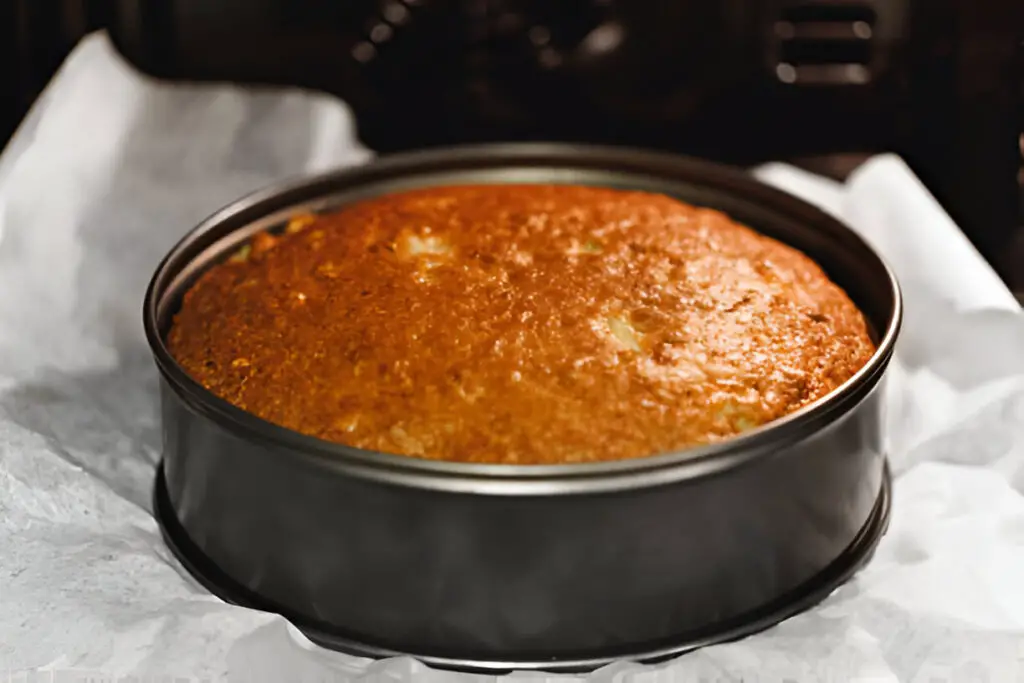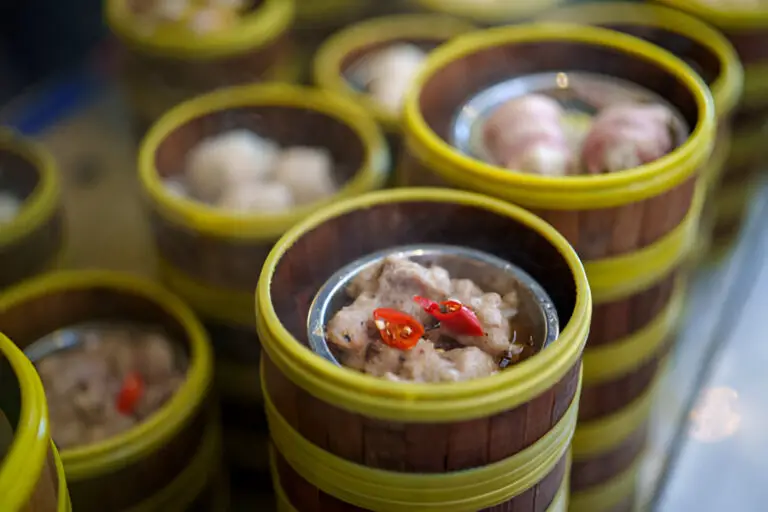How Long Should You Bake a Bundt Cake at 350°F for Perfect Results?

Baking a Bundt cake is like sculpting a masterpiece from a mound of flour, sugar, and butter—except instead of a chisel, you’re using time and temperature. But here’s the catch: a Bundt cake can be a bit temperamental when it comes to baking time. Too little time, and you end up with a gooey mess; too much time, and you’re left with a dry, crumbly disaster.
So, how long should you really bake your Bundt cake at 350°F for that perfect, melt-in-your-mouth texture? Let’s dive into the details and unravel the mystery of Bundt cake baking times.
The Basics of Bundt Cake Baking
First things first, let’s cover the essentials. Most Bundt cake recipes call for a baking temperature of 350°F. This temperature is ideal for evenly cooking the dense batter, ensuring that it rises beautifully and develops that golden-brown crust we all crave. But here’s the tricky part: the actual baking time can vary depending on the size and ingredients of your Bundt cake.
A typical Bundt cake will need about 45 to 60 minutes in the oven. This can fluctuate based on several factors, so it’s essential to understand how to tell when it’s perfectly done.
Whether you’re using a classic chocolate Bundt cake recipe or something a little more adventurous, these general guidelines will give you a solid starting point.
Factors That Affect Baking Time

Bundt cakes come in all shapes and sizes, and each one requires a slightly different approach. So, what makes one Bundt cake bake faster or slower than another? Let’s break it down:
- Size and Volume of the Pan
The size of your Bundt pan plays a crucial role in how long your cake will take to bake. A larger pan with a higher volume of batter will naturally take longer to bake than a smaller one. If you’re using a standard 10- or 12-cup Bundt pan, you’re looking at the 45–60 minute range. But if you’re working with a deep or extra-large pan, you might need up to 75 minutes. - Type of Batter
Lighter batters, like sponge cakes or angel food cakes, bake faster due to their airier structure. On the other hand, denser batters, such as those for pound cakes or fruit-filled Bundt cakes, will take a little longer to cook all the way through. Dense batters need more time for the heat to penetrate all layers without leaving raw pockets inside. - Oven Variability
Not all ovens are created equal, and that’s especially true when it comes to baking. Ovens can have hot spots or inconsistencies in temperature, even if they’re calibrated correctly. This can affect the way your Bundt cake bakes. If your oven tends to run hot, your cake might finish quicker than the recipe states. If it runs cooler, you might need to extend the baking time. Always keep an eye on the cake as it nears the end of the recommended baking time.
| Also check: Can You Bake Frozen Spring Rolls Instead of Deep Frying? |
How to Tell When Your Bundt Cake Is Done
So, you’ve followed the recipe to the letter, and your cake is approaching the 45–60-minute mark. How can you be sure it’s perfectly baked? There are a few foolproof methods to help you gauge when to pull your Bundt cake from the oven.
- The Toothpick Test
This is the classic way to check for doneness. Insert a toothpick into the center of the cake. If it comes out clean or with just a few moist crumbs, your Bundt cake is ready to come out of the oven. If it comes out with wet batter, your cake needs more time. - The Golden Brown Test
A perfectly baked Bundt cake should have a golden-brown top. If your cake has started to develop a rich, slightly crisp crust around the edges, it’s a good sign that it’s close to being done. But don’t let the color fool you—check the toothpick to be sure. - The Pull-Away Test
As your Bundt cake bakes, it should begin to pull away from the sides of the pan. If the edges are starting to separate from the pan but the center is still a bit too moist, let the cake bake a little longer. This can often be a helpful visual cue, especially if you’re using a dark-colored Bundt pan.
What Happens if I Over-Bake My Bundt Cake?
Over-baking a Bundt cake can lead to a dry, crumbly texture that makes each slice feel like you’re chewing on sandpaper instead of enjoying a moist, tender cake. The key to a perfect Bundt is finding that sweet spot where it’s fully cooked but still holds onto its moisture. If you leave it in the oven too long, the cake’s moisture will evaporate, leaving you with a cake that lacks the soft, melt-in-your-mouth texture you crave.
One of the first things you’ll notice when you’ve over-baked your Bundt cake is the dry, stiff texture. While it might still taste good, it will be far from the light, airy crumb you want. The edges of the cake can become hard and overly crispy, and the center may have an unpleasantly dense or dry consistency.
Here’s what happens when you over-bake your Bundt cake:
| Issue | Effect |
| Dryness | Loss of moisture makes the cake tough. |
| Tough texture | Overcooked cake loses its light, fluffy feel. |
| Uneven color | The cake may darken too much on the edges. |
To avoid over-baking, always start checking for doneness a few minutes before the suggested baking time is up. Stick a toothpick into the center, and if it comes out clean or with a few moist crumbs, it’s time to take it out.
Why Temperature Matters
A steady temperature of 350°F is usually perfect for Bundt cakes, but don’t forget that the actual temperature inside your oven is just as important as the set temperature. Using an oven thermometer can help you verify that your oven is truly at the right temperature. Even small variations can change the baking time.
If you bake at a higher temperature than recommended, the outside of the cake can brown too quickly while the inside remains raw. On the other hand, baking at a lower temperature could result in a dry cake that never gets that perfect rise. If you’re using a dark-colored Bundt pan, the cake may cook faster since dark pans absorb more heat. In contrast, light-colored pans reflect heat, which may require a bit more baking time.
A Handy Guide to Bundt Cake Baking Times
Here’s a quick reference guide to help you determine the baking time for different types of Bundt cakes:
| Bundt Cake Type | Typical Baking Time at 350°F |
| Classic Bundt Cake | 45–50 minutes |
| Pound Cake | 50–60 minutes |
| Light/Sponge Cake | 40–50 minutes |
| Fruit-Filled Bundt Cake | 55–70 minutes |
| Chocolate Bundt Cake | 45–60 minutes |
| Large Bundt Cake (12-cup) | 60–75 minutes |
Keep in mind that these times are general recommendations. The best way to check for doneness is to use the methods outlined earlier—checking the cake with a toothpick and observing the texture of the cake as it bakes.
Final Thoughts: Patience Is Key
Baking a Bundt cake at 350°F is an art that combines precision with patience. While it may take some trial and error to perfect the baking time, remember that the goal is to bake the cake all the way through while keeping it moist and tender.
Trust your senses—smell, sight, and touch—and use the tools available to you, like a toothpick and your oven thermometer, to ensure you achieve a perfect Bundt cake every time.
In the end, the time and attention you put into baking your Bundt cake will pay off in spades. A beautifully baked Bundt cake, with the right texture and flavor, will be worth the wait—and the effort.
So next time you bake, remember: a perfect Bundt cake isn’t just about the time on the clock; it’s about understanding the process and trusting the signs that tell you when it’s ready to shine.






